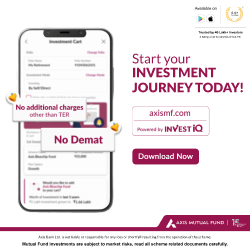Vietnam’s 20% US Tariff Shock: What It Means for India’s Trade Strategy
What Happened Between the US and Vietnam?Until now, Vietnam enjoyed preferential access to t
- by Shan 2025-07-07 08:35:29
In a move that’s rattled Asian export markets, the United States has slapped a flat 20% tariff on all Vietnamese goods, replacing a decades-old trade agreement that had once helped Vietnam become a global export powerhouse.
While the headlines focus on Vietnam, the ripple effects go much further — and India is right in the splash zone. A recent report from the Global Trade Research Initiative (GTRI) is urging Indian policymakers to take this shift seriously as they finalize their own trade talks with Washington.
Here’s what’s changed, why it matters, and how India can respond
What Happened Between the US and Vietnam?
Until now, Vietnam enjoyed preferential access to the US market under a 2000 Bilateral Trade Agreement (BTA). This allowed key exports — textiles, footwear, seafood, and furniture — to enter at reduced tariff rates (2–10%).
But under a new deal announced by former US President Donald Trump, those benefits are gone. Instead:
A flat 20% tariff applies to all Vietnamese exports to the US.
A punitive 40% tariff targets goods that are manufactured elsewhere (especially China) but routed through Vietnam — a move meant to crack down on transshipment.
Key stat: Vietnam’s exports to the US grew from $800 million in 2001 to over $135 billion in 2023. That growth is now at risk.
Why the Deal Matters Beyond Vietnam
This isn’t just about two countries changing trade terms. It’s a clear sign that the US is rewriting trade rules in Asia, and tariffs are back in the toolkit.
More importantly, it shows how quickly a reliable trade partner like Vietnam can face a harsh reversal. For India, this is a reality check.
GTRI’s Warning to India: Don’t Rush Into a Deal
India is currently negotiating its own trade arrangement with the US. And while better access to American markets is tempting, the Vietnam case shows that deals can be re-written — fast and unilaterally.
According to GTRI, India should be especially cautious about:
Flat duty structures that ignore sector-specific needs.
Lack of clarity on rules of origin, which can trigger disputes.
Sudden tariff reversals that can hurt long-term exporters.
What India Should Watch Closely
Here’s a quick comparison to understand the shift:
How This Affects Indian Exporters
This shift can open up some opportunities — but also introduces new risks.
Opportunities for India
Vietnam’s loss of cost advantage makes Indian goods more competitive in textiles, seafood, and furniture.
Buyers looking to diversify supply chains away from China + Vietnam may turn to India.
India can promote itself as a reliable trade partner with strong domestic manufacturing.
Risks for India
The US could demand reciprocal concessions in services or digital trade.
Any deal lacking clear rules of origin could backfire if India becomes a transshipment hub.
A flat tariff system, if imposed later, could hurt specific high-performing sectors.
Real-Life Example: India’s Textile Sector
Vietnam's textile industry thrived on low tariffs. Now, a 20% levy can hurt margins and order volumes.
India’s textile exporters, especially those in Tiruppur, Ludhiana, and Surat, could benefit if they’re prepared to scale up and meet compliance.
Action Point: Government must invest in export readiness programs and quick infrastructure support to help Indian firms capture lost Vietnam share.
Legal Concerns: WTO in the Picture
Trade experts say the new US-Vietnam deal — especially the 40% penalty for routing Chinese goods — could violate WTO rules.
Why? Because routing doesn’t always change the product’s origin, and penalizing it may breach global norms. If challenged, it could lead to disputes that reshape how rules of origin are interpreted across Asia.
India’s Takeaway: Don’t sign any trade deal without solid WTO-compatible clauses — or risk being dragged into future disputes.
Bigger Picture: The New US Trade Playbook
Trump’s strategy (and possibly the next administration’s too) shows a shift:
Less focus on multilateral agreements (like WTO).
More emphasis on bilateral deals that are transactional and tariff-based.
Tariffs are being used as a weapon in geopolitics — not just economics.
What India Should Do Now
Here’s a checklist Indian policymakers and exporters can use:
For Policymakers
Push for sector-wise tariff models instead of flat rates.
Insist on clearly defined rules of origin.
Add exit clauses or review mechanisms in case of unfair tariff hikes.
Avoid over-dependence on a single market (like the US).
Build WTO-compliant safeguards.
For Exporters
Watch for supply chain gaps left by Vietnam in the US.
Step up compliance standards to meet US buyer expectations.
Invest in capacity building for export volume spikes.
Partner with government trade bodies for support and early signals.
Final Thought
Deals like the US-Vietnam one are no longer just about trade — they’re about power, strategy, and supply chain control. For India, this is not just a warning shot — it’s a moment to shape a resilient, forward-looking export strategy that doesn’t get caught off guard.
Read also: Nothing Phone (3) with Snapdragon 8s Gen 4 & All-50MP Cameras: India Launch Highlights

POPULAR POSTS
Loan EMIs to Drop as RBI Slashes Repo Rate - Full MPC December 2025 Highlights
by Shan, 2025-12-05 11:49:44
Zoho Mail vs Gmail (2025): Which Email Platform Is Best for Businesses, Startups, and Students?
by Shan, 2025-10-09 12:17:26
PM Modi Launches GST Bachat Utsav: Lower Taxes, More Savings for Every Indian Household
by Shan, 2025-09-24 12:20:59
$100K H-1B Visa Fee Explained: Trump’s New Rule, Clarifications & Impact on Indian Tech Workers
by Shan, 2025-09-22 10:11:03
India-US Trade Deal Soon? Chief US Negotiator Arrives in Delhi as Talks Set to Begin Tomorrow
by Shan, 2025-09-15 11:54:28
Modi Meets Xi: Trump’s Tariffs, Strategic Autonomy, and the Future of Asia’s Power Balance
by Shan, 2025-09-03 06:40:06
Google Claims Gemini AI Uses Just ‘Five Drops of Water’ Per Prompt, Sparks Debate
by Shan, 2025-08-22 12:34:27
RECENTLY PUBLISHED

Pine Labs IPO 2025: Listing Date, Grey Market Premium, and Expert Outlook
- by Shan, 2025-11-05 09:57:07

The Agentic Revolution: Why Salesforce Is Betting Its Future on AI Agents
- by Shan, 2025-11-05 10:29:23

Top 10 Insurance Companies in India 2026: Life, Health, and General Insurance Leaders Explained
- by Shan, 2025-10-30 10:06:42

OpenAI Offers ChatGPT Go Free in India: What’s Behind This Big AI Giveaway?
- by Shan, 2025-10-28 12:19:11

Best Silver Investment Platforms for 2025: From CFDs to Digital Vaults Explained
- by Shan, 2025-10-23 12:22:46





 Subscribe now
Subscribe now 